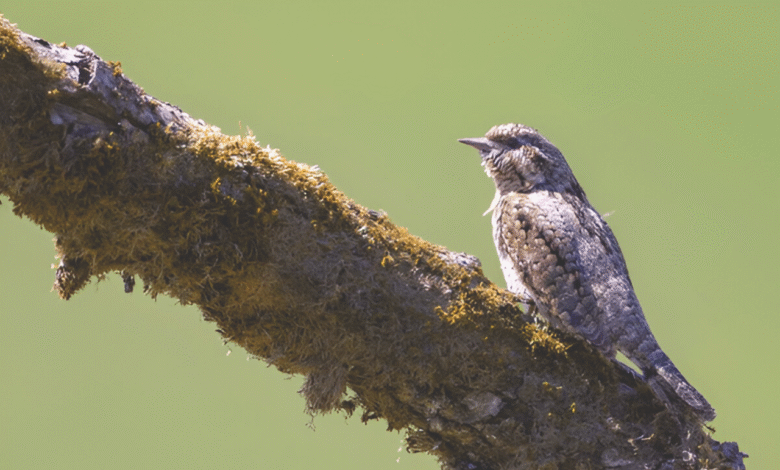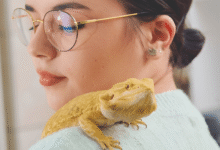
How to Set Up the Perfect Habitat for Small Pets
Perfect habitat for small pets Learn cage setup, safe bedding, enrichment ideas & cleaning tips for healthy, happy furry friends.
Creating the perfect habitat for your small pets is essential for their health, happiness, and overall well-being. Whether you have a playful hamster, a social guinea pig, or a curious rabbit, their living environment plays a crucial role in their quality of life. A Perfect Habitat mimics their natural surroundings, provides safety, and encourages physical and mental stimulation. From selecting the right enclosure to choosing safe bedding and enrichment items, every detail matters. This guide will walk you through the key steps to ensure your furry friend thrives in a space tailored to their specific needs.
Perfect Habitat have unique requirements depending on their species, size, and behavior. The Perfect Habitat isn’t just about aesthetics it’s about functionality, comfort, and security. Proper ventilation, appropriate space, and the right accessories all contribute to a stress-free environment. By understanding your pet’s natural instincts and preferences, you can create a home that supports their physical health and mental enrichment. Whether you’re a first-time pet owner or looking to upgrade your current setup, these expert tips will help you build an ideal living space that keeps your small companion happy and healthy for years to come.
How to Set Up the Perfect Habitat for Small Pets
Choosing the Right Cage
The foundation of a Perfect Habitat is selecting the right cage. The enclosure should be spacious enough to allow movement, exploration, and exercise. For example, hamsters need at least 450 square inches of floor space, while guinea pigs require a minimum of 7.5 square feet for one pet. Wire cages with solid bottoms are ideal for ventilation, while plastic tubs can work for burrowing animals. Always ensure the spacing between bars is narrow enough to prevent escapes.
Selecting the Best Bedding Material
Bedding plays a vital role in maintaining comfort and hygiene. Paper-based bedding is highly absorbent and dust-free, making it safe for small pets. Avoid cedar and pine shavings, as they contain harmful oils that can cause respiratory issues. For burrowing animals like gerbils, a deeper layer of bedding (at least 6 inches) allows natural digging behavior. Regularly spot-clean soiled areas and replace bedding weekly to prevent odors and bacteria buildup.
Providing Proper Nutrition and Hydration
A balanced diet is essential for your pet’s health. Fresh hay should be the primary food for rabbits and guinea pigs, supplemented with leafy greens and pellets. Hamsters and mice thrive on high-quality seed mixes with occasional protein sources like mealworms. Always provide fresh water in a drip-proof bottle to prevent spills and contamination. Avoid sugary treats, as they can lead to obesity and dental problems.
Enrichment and Exercise Opportunities
Small pets need mental and physical stimulation to prevent boredom. Include chew toys, tunnels, and climbing structures to mimic their natural environment. An exercise wheel (solid-surfaced for safety) is a must for hamsters and mice. For guinea pigs and rabbits, hideouts and platforms encourage exploration. Rotating toys weekly keeps their environment engaging and prevents stress.
Maintaining Optimal Temperature and Humidity
Extreme temperatures can be dangerous for small pets. The ideal range for most small animals is 65-75°F (18-24°C). Avoid placing cages in direct sunlight or drafty areas. Humidity levels should stay between 40-60% to prevent respiratory issues. In colder months, provide extra bedding or a pet-safe heating pad (never a human heating pad, as it can overheat).
Ensuring Proper Hygiene and Cleaning
Daily Cleaning Essentials
Spot-clean soiled bedding and remove uneaten fresh food daily to prevent Bacterial growth. Wipe food bowls and water bottles with hot water, and check for algae buildup in water containers. Quickly address any wet spots in bedding to maintain dryness and prevent skin infections in your pet.
Weekly Deep Cleaning Protocol
Completely replace all bedding and scrub the cage with pet-safe disinfectant weekly. Wash all accessories (hideouts, toys, ramps) with mild soap and rinse thoroughly. Allow all components to dry completely before reassembling to prevent respiratory irritation from lingering moisture.
Sanitization Best Practices
Use vinegar-water solutions (1:1 ratio) or veterinary-approved cleaners instead of harsh chemicals. Pay special attention to corners and crevices where waste accumulates. Sterilize cleaning tools (brushes, scoops) monthly by soaking in diluted bleach solution (10%) and rinsing well.
Odor Control Solutions
Layer baking soda beneath bedding for natural odor absorption in rodent Perfect Habitat. Replace litter boxes for rabbits/guineas every 2-3 days, using paper-based or aspen products. Install well-ventilated cage covers (not solid) to allow air flow while containing loose bedding.
Seasonal Deep Cleaning
Every 3 months, disassemble and sun-dry wooden accessories to kill mites. Replace chew toys and worn plastic items that harbor bacteria in microscopic scratches. Consider professional-grade disinfectants for parasite outbreaks, following exact dilution instructions for pet safety.
Monitoring Health and Behavior
Physical Condition Indicators
Regularly inspect your pet’s body for abnormalities like matted fur, crusty eyes, or unusual lumps. Check that their weight remains stable by gentle handling weekly, and ensure teeth aren’t overgrown (especially in rodents). Healthy pets should have clean ears, bright eyes, and smooth nails without cracks or excessive length.
Behavioral Red Flags
Note any drastic changes in normal routines like reduced playtime, hiding constantly, or refusing favorite treats. Watch for repetitive behaviors (pacing, over-grooming) that signal stress, or sudden aggression toward cage mates. Normal behaviors that disappear (like a hamster’s nightly wheel-running) often indicate health issues.
Emergency Warning Signs
Immediately address labored breathing, bloody discharge, seizures, or inability to balance. Be alert for signs of pain like teeth grinding (in rabbits), hunched posture, or refusing to move. Diarrhea lasting over 12 hours or complete food refusal for 24+ hours requires urgent veterinary attention to prevent fatal complications.
Preventative Health Maintenance
Schedule annual check-ups even for Perfect Habitat, as small animals hide illnesses well. Keep a health journal tracking weight, appetite, and unusual incidents. Quarantine new pets for 2-3 weeks before introducing them to prevent disease spread to existing pets.
Environmental Stress Factors
Monitor how Perfect Habitat changes affect behavior new pets nearby, loud noises, or cage relocation can cause stress. Ensure temperature/humidity stays in species-appropriate ranges year-round. Rotate enrichment items weekly to prevent boredom-related health issues like overgrown teeth from lack of chewing.
Read More: Beginner’s Guide to Caring for Hamsters the Right Way
Conclusion
Creating the Perfect Habitat for your small pet is one of the most rewarding aspects of pet ownership, ensuring they live a comfortable, stimulating, and healthy life. By carefully selecting the right enclosure, bedding, toys, and maintaining proper temperature and cleanliness, you’re not just building a cage you’re designing a home that caters to your pet’s natural behaviors and needs. Remember, each species has unique requirements, so always research and tailor the Perfect Habitat specifically for your furry friend.
Ultimately, the effort you put into crafting the Perfect Habitat will pay off in your pet’s happiness and longevity. A well-designed space reduces stress, prevents health issues, and strengthens the bond between you and your companion. Whether you’re setting up a new Perfect Habitat or improving an existing one, these guidelines will help you create an environment where your small pet can thrive. After all, a happy Perfect Habitat makes for a happy pet owner.
FAQs
What is the best cage size for a dwarf hamster?
A dwarf hamster needs at least 360 square inches of floor space, though larger is always better for exercise and exploration.
Can I use fleece bedding for my guinea pig’s cage?
Yes, fleece liners are reusable and safe, but they must be changed and washed frequently to prevent odor and bacteria buildup.
How often should I replace my rabbit’s hay?
Fresh hay should be replenished daily, as it is essential for digestion and dental health.
Do mice need an exercise wheel in their cage?
Yes, a solid-surface wheel (8-12 inches in diameter) is crucial for mice to stay active and prevent obesity.
What’s the safest way to heat my pet’s Perfect Habitat in winter?
Use a thermostat-controlled heating pad designed for pets, placed under part of the cage, to avoid overheating risks.







